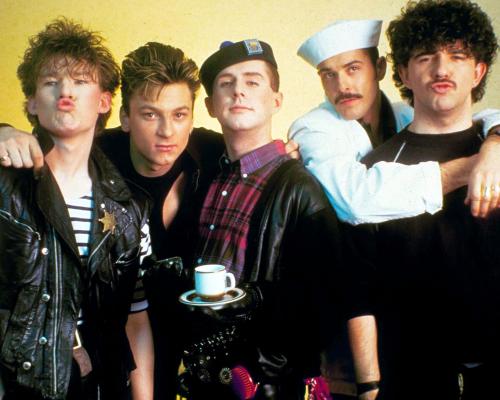
“She’s the one to save me,” errant protagonist Joe declares of Rita, his longsuffering partner and unpaid therapist, in the prison letter that forms the lyrics of Paul Kelly’s 1996 single How to Make Gravy. The perennial Christmas classic was recently voted the ninth best Australian song of all time. Almost 30 years after he wrote it, Kelly has released a sequel, Rita Wrote a Letter, in which we finally learn what became of Rita while Joe was in jail: she wised up and moved on.
Last year, Kelly told Guardian Australia, “I have imagined, from time to time, that the protagonists of To Her Door [1987], Love Never Runs On Time [1994] and How To Make Gravy [1996] could be the same guy but I’m not definite about that.” Regardless of their identity, his knack of portraying the hapless underdog – plagued by bad timing and missed chances – has captured the public’s imagination and his own; Kelly has clearly been unable to resist revisiting Joe.
The recipient of Joe’s letter in How to Make Gravy was Dan, the brother Joe feared might have designs on Rita. In the song, Joe quickly apologises and blames his overactive imagination on his jealousy, but – spoiler alert – it turns out he was right.
Despite the angst (or maybe because of it), How to Make Gravy became the soundtrack to many a dreaded holiday season drive or a simmering turkey lunch. Last year, the song spawned a film – the first feature film commissioned by streaming platform Binge, with Daniel Henshaw as Joe and Agathe Rousselle as Rita. This week, in some inspired marketing, a death notice for Joe was published in The Age.
-
Sign up for the fun stuff with our rundown of must-reads, pop culture and tips for the weekend, every Saturday morning
We might have imagined that Rita Wrote a Letter would take the form of a “Dear John” missive, but Rita only gets eight lines and this new song is still very much from Joe’s perspective. “You hear Rita’s voice loud and clear, but Joe talks even more. I couldn’t shut him up,” Kelly admits.
Upon his release from jail, Joe finds a job as a dish pig, sleeping in the spare room of a relative, Mary. He takes some pleasure in honest grunt work, but the old malaise still lies beneath: “The day I walked out of prison / I knew that I was still in stir …”
Musically, the nostalgia is as thick as Joe’s gravy, with exactly the right amount of seasoning. Built over a 50s rhythm and blues piano line, which nephew Dan Kelly came up with, the verse melody has a ghost of the original song, and there’s the odd familiar guitar flourish that seems to be a wink. Kelly calls Rita Wrote a Letter a “black comedy”, a sentiment that’s underscored by the upbeat, stabbing tempo (reminiscent of his 1987 single Dumb Things).
Kelly’s obvious affection for Joe is echoed in the video, set in a St Kilda home with shabby furniture that’s seen better days. Justine Clarke (Kelly’s longtime friend and collaborator) plays Rita with a resigned smile. If Joe will be around to haunt her forever, as he promises, she’s made her peace with it. As the lyrics go: “Joe, I gave you good chances / But half a year turned into two / You could never hold your temper / And you always made it all about you.”
Selfishness, particularly around heroin use, has popped up in Kelly’s songs before, most notably in 1989’s Careless (“How many times did you call my name / Knock at the door but you couldn’t get in?”). In Rita Wrote a Letter, his protagonist caves in once more – this time, fatally: “One day I went to see an old friend / And I brought a little package home / For old times’ sake sweet oblivion / But some things you shouldn’t do alone.”
Joe, it’s revealed, is writing this new song from “six foot down and under the clay”, which explains the obit and puts paid to any further pen-pal activity. Over the fade-out, there’s a ghostly throwback to How to Make Gravy: “I didn’t mean to say that / It’s just my mind, it plays up / multiplies each matter …”
As teasers for new albums go, Rita Wrote a Letter is a poignant one. Kelly’s forthcoming LP, Seventy, is released in November and has themes of “taking stock and celebrating continuity”. The artwork features a photograph of 70-year-old Kelly on the front and a portrait from 1988 on the rear. His most enduring protagonist may now be dead, but Kelly’s creative spirit is more alive than ever.







